Sanitary tax is commonly known as the sanitary cent tax on retail sales of some fuels (IVMDH). As the name indicates, it applies to consumers who …
Sanitary tax
This tax is commonly known as the sanitary cent tax on retail sales of some fuels (IVMDH). As the name indicates, it applies to consumers who purchase gasoline, diesel, fuel oil and kerosene not used as fuel for heating. It is called Sanitary cent because it is intended to solve liquidity problems of public health. Until a couple of months ago the Sanitary cent was completely unknown to most people, but after the judgment of the Court of Justice of the European Union we have all updated on what Sanitary cent is and how it affected us.
Application of the Sanitary tax
The Sanitary cent or IVMDH has been applied since January 1st, 2002 and it consisted of a mandatory state part and the possibility of adding a voluntary regional section. On January 1st, 2013 the Sanitary cent was no longer applied as such and was integrated within the Special Tax on Hydrocarbons. This change was made for the Sanitary cent to comply with European Community law and not to be questioned its legality.
Most Spanish regions have implemented the Sanitary cent, except for Aragón, Canarias, La Rioja and Basque Country. Although this tax has been nominated as a Sanitary “cent”, in 2013 the tax was between 1.7 and 4.8 cents per litter of fuel. In the next picture we see how the Sanitary cent was applied in the Spanish territory in 2013:
Judgment of the Court of Justice of the EU (CJEU) on Sanitary cent
For the CJEU, the Sanitary cent does not meet the main condition imposed on an assessment of its characteristics, this requirement is to pursue a specific purpose. According to the CJEU, the purpose of the Sanitary cent is purely budgetary, since the amount collected is not intended to reduce the social and environmental costs associated with hydrocarbons consumption. Furthermore, the CJEU rejected the limitation of the effects in time of the judgment as required by the Spanish Government, as the CJEU considered that Spanish Government has not acted in good faith keeping the Sanitary cent in force for over 10 years despite warnings from the European Commission.
Following the CJEU ruling, the Spanish Tax Administration will have to repay the amount overpaid to anyone who requests it, provided that they can justify the applied amounts by the corresponding invoices.
How to claim back the Sanitary cent?
There are two options to claim the Sanitary cent:
1) Application for refund of funds of the tax unduly paid – this option applies for a refund of Sanitary cent for the years 2010-2012 – estimated refund time is between 6 months and 1 year. This is the fiscal way to claim the Sanitary cent in front of the Spanish tax office/ Agencia Tributaria. It is possible to claim the Sanitary cent four years back. Claims for 2nd quarter of 2010 – filed by July 20th, 2014. For claims of 1st quarter 2011 the deadline is April 20th, 2015, etc.
2) Application for financial liability of the state – asking liability and compensation from the State for damages arising from the application of a zero tax. This is the administrative way to claim the Sanitary cent in front of the Spanish Council of Ministers (1st level) and Supreme court (2nd level) – this option applies for the years 2002-2012. The tax refund could be expected in 3 years approximately. The deadline for this application is 27.02.2015.
Ivo Brabec
World Online Services

